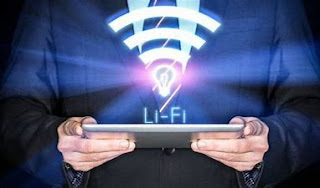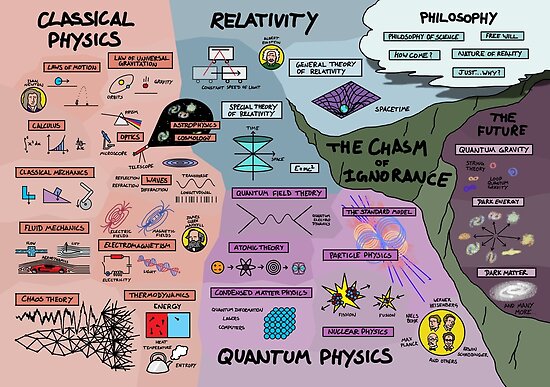LI-FI: A NEW TOMORROW OF DATA TRANSFER
With the advancement of technology, people are now totally depended on virtual data. This virtual dependency is increasing the amount of data storage day by day. With the increase in the amount of data day by day, people are demanding faster data transfer technology at low cost. Well, the advancement in data transfer technology we have achieved a pretty high-speed technology which is available as 4G and in few countries like US 5G is also an option. These connections provide a maximum of 150-200 Mbps of average speed. Wi-fi is a very good option in terms of data transfer. It provides a maximum of 200Mbps (WLAN-11n) and 1-2 Gbps (WiGig/Giga-IR).
The urge of high-speed data transfer has triggered the
invention of a new technology called Li-fi. What is Li-fi? It is the short form
of “Light Fidelity”, very similar to a Wi-fi, it is an optical wireless network
communication system. Li-fi network can be powered by Light Rays from
either the visual range or the Infrared (IR) or Ultraviolet Region.
A striking advantage of Li-fi over Wi-fi is that it can boost the network
speeds about 100 times faster than the conventional Wi-fi system available. Although
Li-fi can be used by using any of the above-mentioned light spectra, according
to the present technology, it can only be used by using VLC (Visible Light
Communication) technology. Why Li-fi is faster than other technology? As Li-fi
uses light to transfer data, which is much faster than RF (Radio Frequency)
used by Wi-fi and MM Waves used by 4G and 5G, that is why it is 100 times
faster than other technologies.
History
 |
| Harald Haas |
Who does Li-fi Work?
Li-fi is a derivative of optical wireless communications
(OWC) technology, which uses LEDs as a medium to deliver data at very high
speed in a similar manner to Wi-fi. As mentioned before Li-fi uses VLC for data
transmission. A VLC system has two qualifying components:
1.
At least
one device containing a photodiode to receive light signals.
2. A light source equipped with a signal processing unit for the transmission of signals.
This is an important quality to look for in a VLC
light source because Li-fi relies on the constant stream of photons emitted as
visible light for the transfer of data. When the current applied to the light
source is varied slowly, the light source dims up and down, which makes it
unsuitable as a source of light, not for the Li-fi system, but as a device for
household illumination. To strike a balance between VLC light source and
household illumination, this current as well as the optical output is modulated
at extremely high speeds, making it detectable by the photodiode device and
converted back into electrical current, but unperceivable by the human eye.
Once these signals are received and demodulated, they can now be converted into
a continuous stream of binary data that contain videos, images, audio, text, or
applications that are readily-consumable on any internet-enabled device.
Li-fi Consortium and Other Developments
In 2011, four industry leaders from four different countries created a group that seeks to enhance and promote different Optical Wireless Communication (OWC) technologies. The group was known as the Li-fi Consortium. It was founded by Fraunhofer IPMS, Germany, IBSEN telecom, Norway, Supreme Architecture, Israel/USA, and TriLumina, USA. The focus of the consortium is not limited to Li-fi, however, as previously stated. Instead, it pushes for the advancement of all forms of OWC, which include Li-fi and fiber optics, among others.
Advances in Li-fi technology were on display over the years. In August 2013, Li-fi systems were able to demonstrate data rates of over 1.6 Gbps over a single colour LED. In October 2013, Chinese manufacturers were working on Li-fi development kits. The scientists say data speed of up to 150 Mbps were possible using microchipped bulbs. In April 2014, Russian company Stins Coman announced their development of Beam Caster, a Li-fi wireless local network capable of transferring 1.25 gigabits of data per second. They foresee boosting speeds of up to 5 Gb/s soon.
Applications
There are many
applications of Li-fi in the present day. As it uses the light source people
may use it for various purpose. Here are the top 5 applications of Li-fi
technology.
1. Cellular
Communications: Li-fi can take pride in the fact
that it can provide high-speed data communication 24/7 by
turning normal streetlights into network access points.
Communication costs would therefore be significantly reduced because
there would be no need to install radio bases. In other
words, streetlamps would provide both, data communication and
lighting.
2. High
Capability: In a room, any user of Li-fi can get
a high-speed data connection no matter how many users are connected. This
is possible given the fact that the area of the channels is determined by
the light range provided by the LED lamp. Each light pool provides full channel
data rates with fewer simultaneous users than conventional radio
technology.
3. Security: The the greatest asset of Light communications is that light can’t go through
walls, hence data security is enhanced concerning radio-based networks.
4. Underwater Communications: Unlike radio waves, which are easily absorbed by
water, light waves can travel great distances. This remarkable property
allows diver-to-diver or diver-to-minisub communications, even if they are
miles apart.
5. Intelligent
transportation System: Li-fi could
potentially prevent car collisions through proximity warnings, which
can be transmitted from car to car using their tail or headlights.
This also would allow real-time to download useful information, such as
the optimal routes to take.
Advantages of Li-fi
·
Efficiency: Li-fi works on visible light technology. Since homes and
offices already have LED bulbs for lighting purposes, the same source of light
can be used to transmit data. Hence, it is very efficient in terms of costs as
well as energy. The light must be on to transmit data, so when there is no need for
light, it can be reduced to a point where it appears off to human eye but is still
on and working.
- Availability: Wherever there is a light source, there can be the Internet. Light bulbs are present everywhere – in homes, offices, shops, malls and even planes, meaning that high-speed data transmission could be available everywhere.
- Security:
One main advantage of Li-fi is security. Since light cannot pass through opaque structures, Li-fi Internet is available only to the users within a
room and cannot be breached by users in other rooms or buildings.
Disadvantages of Li-fi
- Internet
cannot be used without a light source. This could limit the locations and situations in which Li-fi could be used.
- Because
it uses visible light, and light cannot penetrate walls, the signal's range is limited by physical barriers.
- Other
sources of light may interfere with the signal. One of the biggest potential drawbacks is the interception of signals outdoors. Sunlight will interfere with the signals, resulting in interrupted Internet.
- A
whole new infrastructure for Li-fi would need to be constructed.
Li-fi VS Wi-fi
|
Features |
Li-fi |
Wi-fi |
|
Full form |
Light Fidelity |
Wireless Fidelity |
|
Operation |
Li-fi
transmits data using light |
Wi-Fi
transmits data using radio waves |
|
Interference |
Do not have to aby interference issues
like radiofrequency waves. |
Will have
interference issues from nearby access points(routers) |
|
Technology |
Present IrDA
compliant devices |
WLAN 802.11a/b/g/n/ac/ad
standard-compliant devices |
|
Applications |
Used in
airlines, undersea explorations, operation theatres in the hospitals, office
and home premises for data transfer and internet browsing |
Used for
internet browsing with the help of Wi-Fi kiosks or Wi-Fi hotspots |
|
Merits |
Interference
is less, can pass through salty seawater, works in a dense region |
Interference
is more, cannot pass through seawater, works in a less dense region |
|
Privacy |
In Li-fi,
light does not pass through the walls and hence will provide a much secure
data transfer |
In Wi-fi, RF the signal passes through the walls and hence there is a need to employ
techniques to achieve secure data transfer. |
|
Data Transfer Speed |
About 1 Gbps
and up to 5 Gbps in future |
WLAN-11n
offers 150Mbps, about 1-2 Gbps can be achieved using WiGig/Giga-IR |
|
Data Density |
Works in high
dense environment |
Works in less the dense environment due to interference related issues |
|
Coverage Distance |
About 10
meters |
About 32
meters (WLAN 802.11b/11g), vary based on transmit power and antenna type |
|
System Components |
Lamp driver,
LED bulb(lamp) and photodetector will make up a complete Li-fi system. |
Requires
routers to be installed, subscriber devices (laptops, PDAs, desktops) are
referred to as stations |
|
Frequency of Operation |
10 thousand the time's frequency spectrum of the radio |
2.4GHz, 4.9GHz
and 5GHz |
Table
courtesy: https://www.rfwireless-world.com/Terminology/Li-fi-vs-Wi-fi.html
The introduction of Li-fi
is certainly a welcome one. Of course, with limitations in basic
infrastructure, the total replacement of Wi-fi in favour of Li-fi is next to
impossible. However, what it does present is a viable option that can be used
as an alternative especially in areas that are sensitive to the prevailing
technology. It has, however, succumbed to many different factors that have also
affected its performance. These factors include congestion, limitations of use
due to interference with other functions, and bandwidth saturation, which
clearly exposes the shortcomings of this existing technology.
Lastly, do comment and
share your views for the betterment of the content. Write do the topics on
which you would like to see my blogs. Do mention if I missed anything that should
be in the blog. Share it if you like it and follow my blog to get yourself
introduced to the future of humankind. Log-in to my page https://techgenix99.blogspot.com/ to
keep yourself up-to-date in the field of technology.
References:
·
https://hitricks.com/li-fi-internet-advantages-disadvantages-lifi-vs-wifi






Comments
Post a Comment
Share your views here and help me to improve the content of the site. Do write on which topic you want me to create my next blog